The second matchday in the UEFA Champions League group stages served up an intriguing game in one of the competition’s toughest groups. Slavia Prague came into this game after the disappointment of conceding late to draw away to Inter Milan. Borussia Dortmund will be similarly disappointed in their draw against Barcelona. That was a game where they had the chances to win and establish a strong grip on the group. So both sides entered the game level on points with Slavia looking for an upset in front of their home support.
This tactical analysis will examine Dortmund’s 2-0 win against Slavia. It was a fairly competitive and exciting contest, therefore, this analysis will look at the tactics of both sides.
Lineups
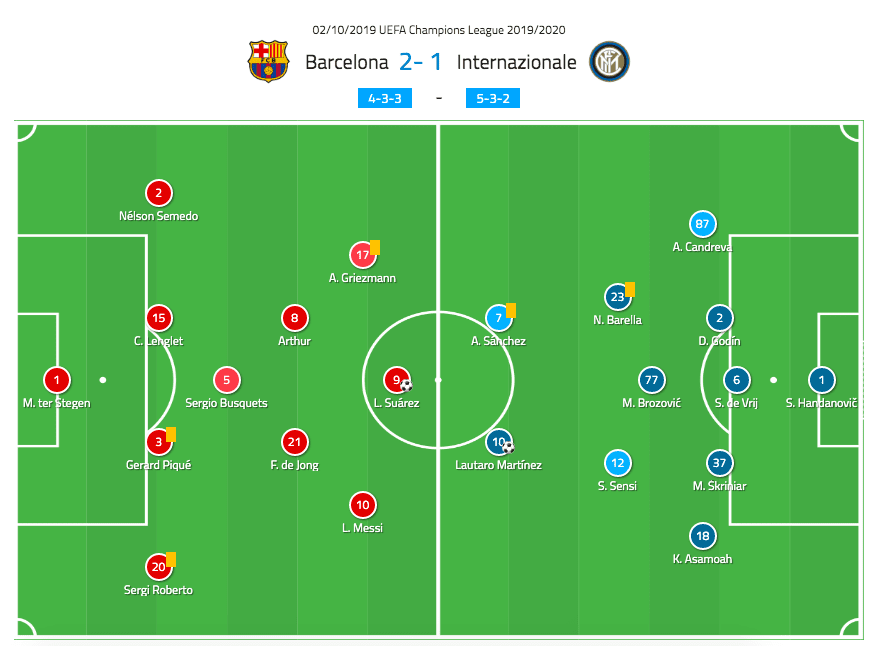
Slavia manager Jindřich Trpišovský sent out the hosts in a 4-1-4-1 shape but it would also look like a 4-2-3-1. Ondřej Kolář would be their goalkeeper for this clash. Vladimír Coufal and Jan Bořil were the fullbacks while Ondřej Kúdela and David Hovorka were the partnership in central defence. Tomáš Souček was joined by Petr Ševčík in the double-pivot. Nicole Stanciu was in attacking midfield while the wingers were Lukáš Masopust and Peter Olayinka. Leading the line was Stanislav Tecl.
Lucien Favre set Dortmund up in a 4-2-3-1 formation. Roman Bürki would be in goal with a backline in front of him made up of Łukasz Piszczek, Manuel Akanji, Mats Hummels and Raphaël Guerreiro. Thomas Delaney and Axel Witsel were the double-pivot in midfield. Jadon Sancho, Julian Brandt, and Achraf Hakimi were the three behind Marco Reus, who was playing as a false nine.
Borussia Dortmund in possession
During the build-up, the Dortmund full-backs would push up while Wistel and Delaney would drop to assist the centre-backs to move the ball forward. Of the two Witsel would drop deeper, often joining the defensive line while Delaney retained his more midfield positioning. Sancho and Hakimi would often stay wide while Reus and Brandt would search for the ball in the central areas.

Slavia used an aggressive man-orientated press high up the pitch. They would aim to force Dortmund into a long ball or win back possession in dangerous areas if Dortmund insisted on playing out on the floor. Of course, the risk that comes with this strategy is the gaps that appear in the pressing team’s defensive shape. Dortmund were able to move the ball through these gaps effectively and bypass the midfield mainly through the wide areas and also long ball attempts from Bürki.
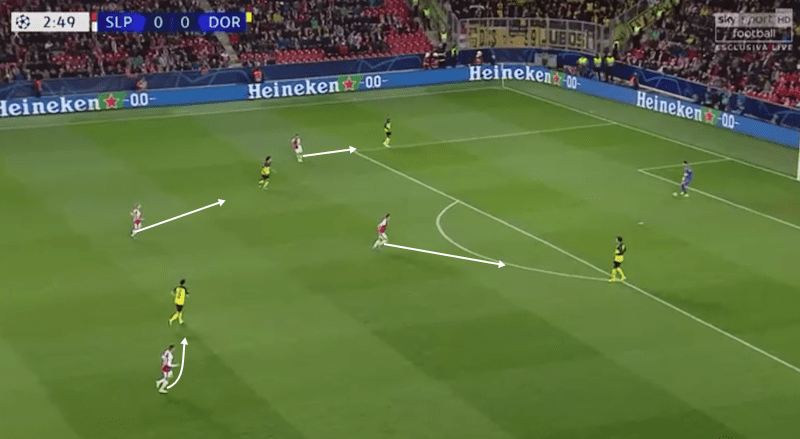
Whenever the press wasn’t on for Slavia, they would fall back to the 4-1-4-1 formation. Ševčík would step up to join the advanced midfield three while Souček patrolled the area behind this line of four.
Dortmund would predominantly progress the ball through the wide areas. They were able to find connections more centrally with Reus and Brandt roaming in those areas. But the ball would tend to make its way out wide eventually. From there their wingers and full-backs would attack the Slavia defence. Their ability to find Sancho in one-vs-one situations was one of their biggest threats given his dribbling capabilities.
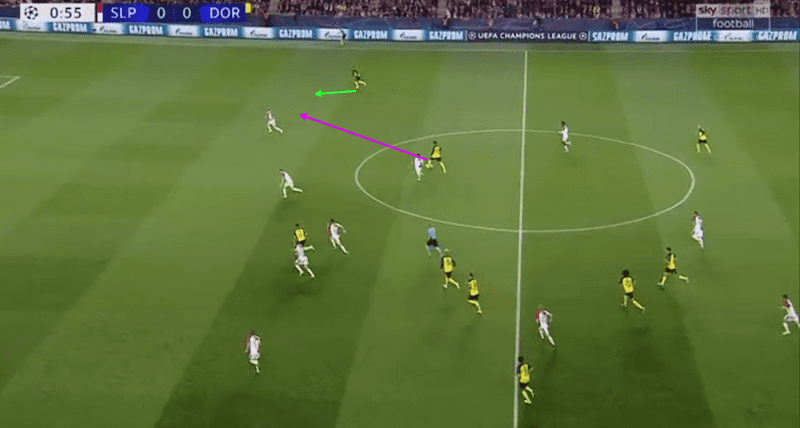
Once they had the lead, Dortmund were much happier to settle for the long ball instead of trying to pass it out. And although Reus and Brandt would lose most aerial battles against the Slavia central defenders, Borussia managed to win plenty of second balls by targeting the long balls to overloaded areas.
Slavia on the ball
Slavia would build up with their full-backs pushing up the pitch while the double-pivot helped the central defenders to bring the ball out. Souček and Ševčík, like Witsel and Delaney, had different roles in the phase of play. Souček would drop much deeper and would often join the defensive line to build up with three at the back. This gave them the numerical advantage against Dortmund’s pressuring front two. Ševčík would then be a single-pivot in midfield who would receive the ball from the back and try to progress the ball. He did well in this regard, via both his passing and his carrying of the ball forward.
Borussia Dortmund defended in a 4-4-2 shape when they dropped back from pressing. Hakimi and Sancho would drop back to flank the double-pivot while Brandt would join Reus upfront. Those two would then lead the charge when it was time to press.
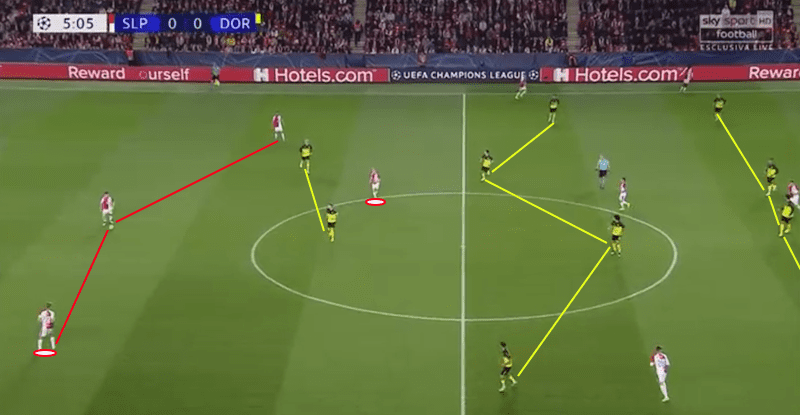
They tried to keep this 4-4-2 compact to deny central passing lanes and force Slavia to play it out wide. Olayinka and Masopust would drop to receive the ball and try to either run at the Dortmund defence or combine with central options. Since Dortmund were focused on cutting out these central options, the Prague players would often stick to attacking out wide.
Despite using their width to move the ball forward, they didn’t find much success from crosses outside of some set-piece attempts. The home side’s greatest success came from balls in behind the Dortmund high defensive line. Runs by the forwards or from midfield caused Dortmund problems as there were gaps in their backline to be exploited.
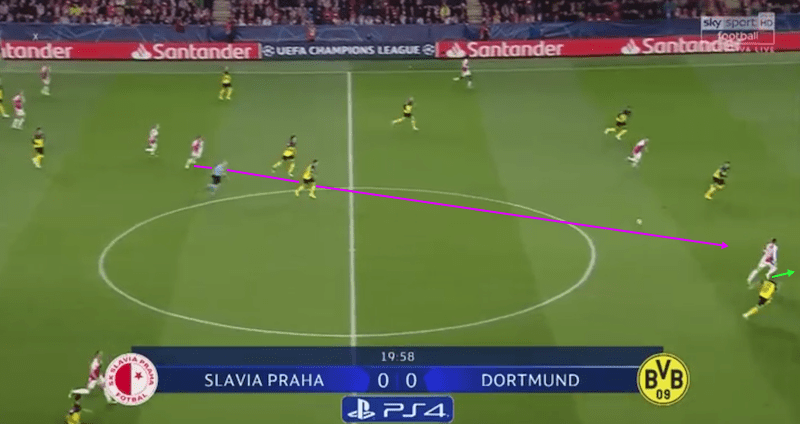
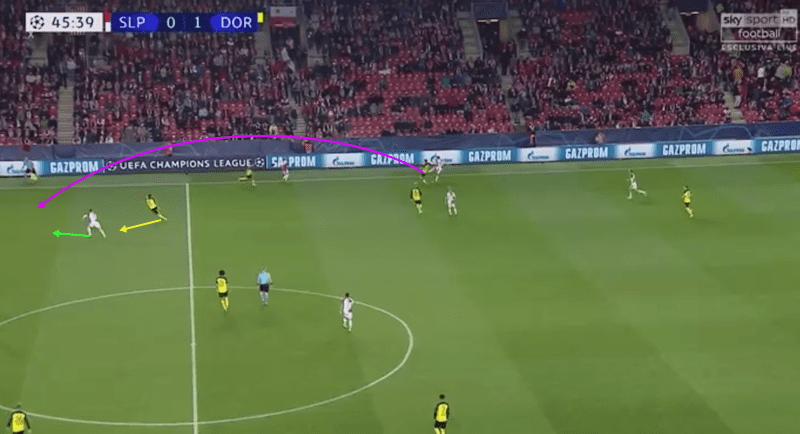
Dortmund also employed a man-orientated press and this would usually be triggered when a Slavia full-back received the ball. Slavia did well to play through this press with the combinations out wide between the wingers and fullbacks in particularly. Coufal and Bořil would look to get forward as much as possible giving their wingers two options.
They could either tuck into the half-spaces to provide room for the overlap. Or they could remain wide to draw the opposing full-back’s attention, allowing their full-backs to make runs via these half-space areas. Overall, the Dortmund wingers did well to track the full-back runs but they did leave their defence vulnerable at times.
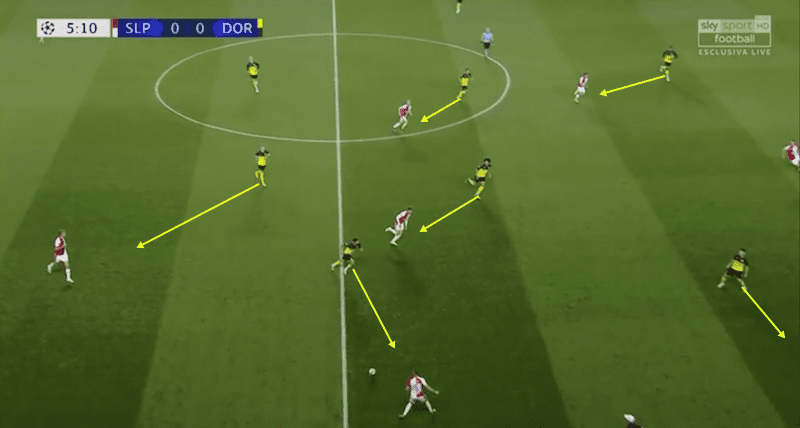
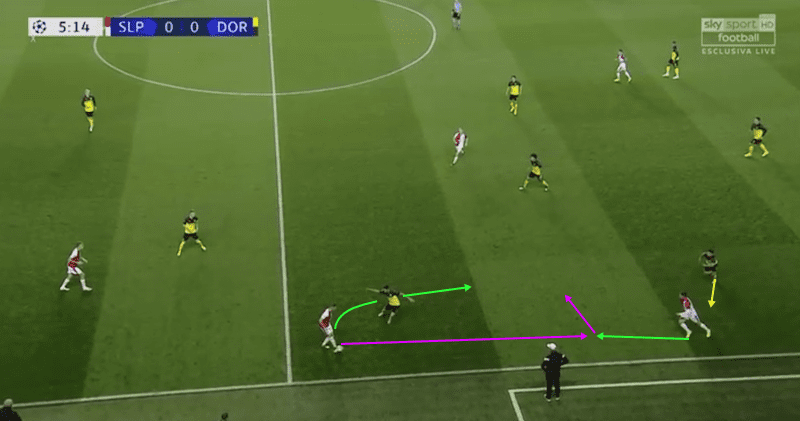
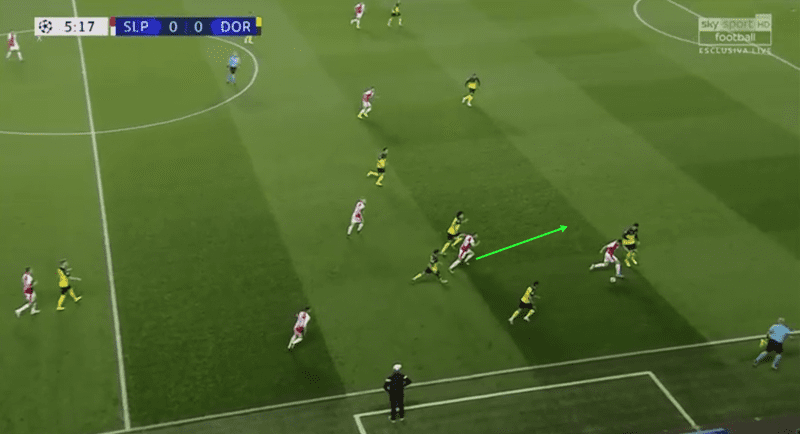
Counter-attacks make the difference
With the attacking nature of the game, both sides found themselves in promising transition situations having just won the ball back. Yet it was only Dortmund who managed to fashion quality goalscoring chances from these moments. The visitors threatened constantly with their counter-attacks with both their goals and other chances coming on the counter.
Their first goal coming moments after a long throw-in attempt where Slavia committed players forward. The second occurred late in the contest while Slavia were chasing the game. This would’ve been expected considering the pacey and skilful nature of their front four.

Conclusion
Dortmund will be glad to return to home comforts having claimed all three points from a challenging away trip. Their attacking quality certainly shone through but also display was some defensive vulnerabilities. They now move on to face Inter Milan in the back-to-back fixtures while level on points at the top of the group with Barcelona. Slavia will certainly look back regretfully at wasted opportunities as they now have the tough task of a doubleheader against Barcelona. But they will take solace in the fact that the group is currently still tight and Europa League qualification is still in play.

If you love tactical analysis, then you’ll love the digital magazines from totalfootballanalysis.com – a guaranteed 100+ pages of pure tactical analysis covering topics from the Premier League, Serie A, La Liga, Bundesliga and many, many more. Buy your copy of the September issue for just ₤4.99 here

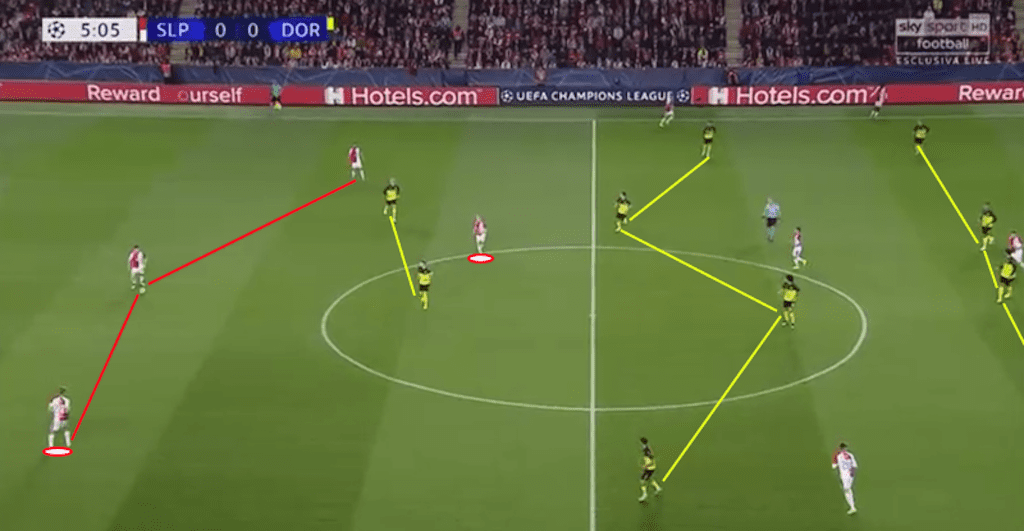




Comments